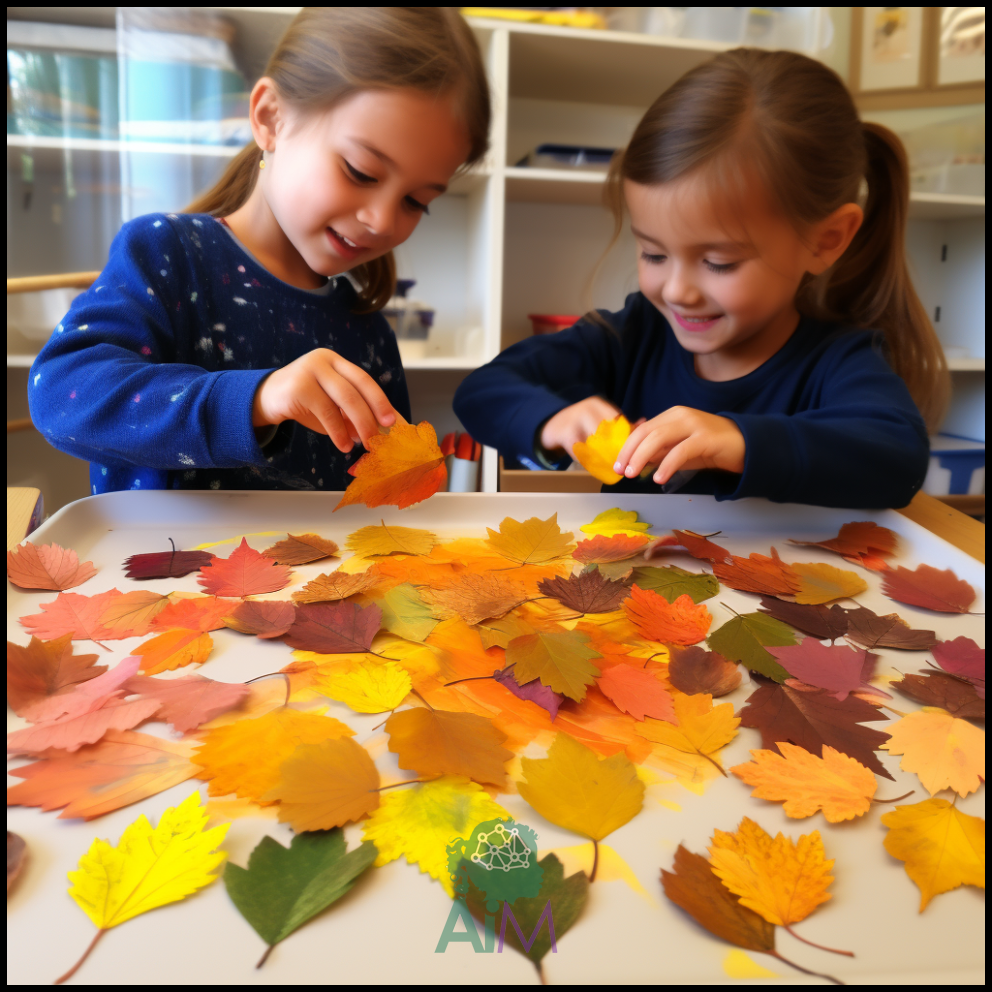If you are wondering how an interactive lesson for the 6-9-year-old lower elementary classroom might look like, here is one example. However, each teacher is different and may add or modify how the lesson is presented. The important part is that the child learns a simple lesson from nature and carries out an activity that helps them be involved in the process. The example assumes the children have all participated in collecting the Autumn leaves ahead of time.
Teacher: “Good morning, everyone. Today we’re going to learn about why leaves change color in the Fall or Autumn. Does anyone know why this happens?”
Setting: The classroom is decorated with autumn-themed materials. There are real leaves of different colors collected from outside, books about autumn, and art supplies for leaf rubbings.
Students: Various answers.
Teacher: “Those are all great thoughts! In the spring and summer, leaves are green because they have a chemical called chlorophyll that helps them make food from sunlight. But in the fall, as the days get shorter and colder, the chlorophyll breaks down and we start to see other colors that were there all along but hidden by the green. These colors can be yellow, orange, red, even purple!”

Activity: The teacher brings out a tray of leaves collected from outside. “Let’s sort these leaves by color. Can you find all the red ones? How about the yellow ones?”
Students: Students sort the leaves into different piles based on their colors.
Teacher: “Now let’s make leaf rubbings to see the details of these leaves up close. You can choose a leaf, put it under your paper, and rub your crayon over it.”
Students: Students engage in leaf rubbing activity.
Wrap-up: “So remember, leaves change color in the fall because the green chlorophyll breaks down and we see the other colors that were there all along. Isn’t that amazing?”
This lesson involves hands-on activities and encourages students to explore and discover on their own.
